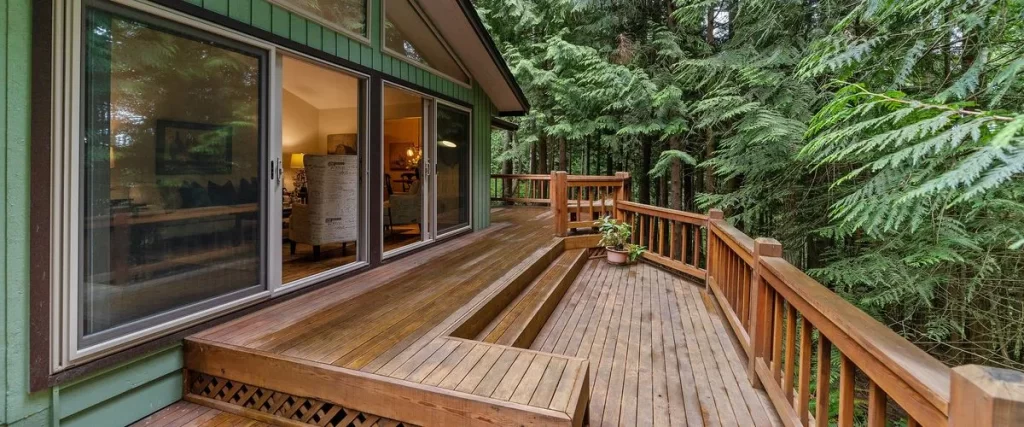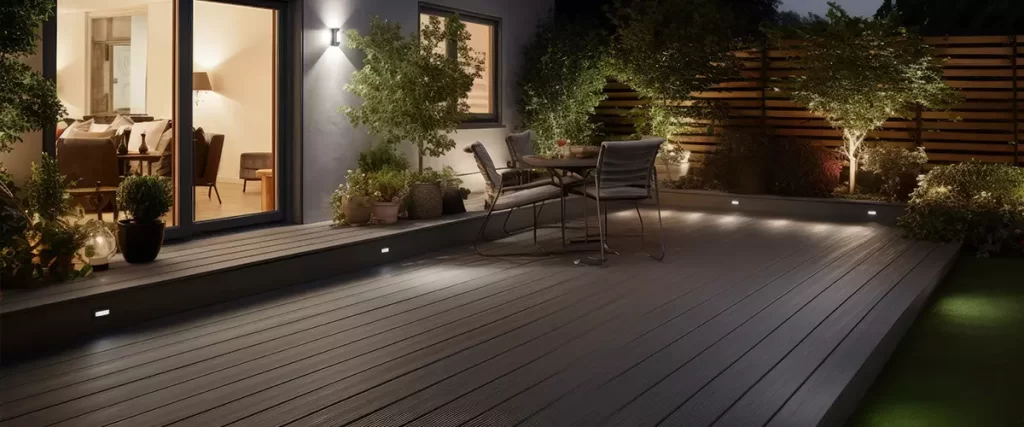Your deck is more than just an outdoor feature, it’s a place to relax, connect, and enjoy the world around you. But for many families, traditional deck designs don’t work for everyone.
Whether you have young children, aging parents, or guests with mobility challenges, getting deck building & make it accessible to all ages and abilities is one of the smartest investments you can make in your home.
And the best part? Accessibility doesn’t have to mean boring or industrial-looking. With a few thoughtful design choices, you can create a beautiful, inclusive outdoor space that welcomes everyone safely and comfortably.
Here’s how to do it.

Why Accessibility Matters, Even If You Don’t Think You Need It Yet
Let’s be real: most people don’t think about accessibility until they need it. But accessibility is about more than meeting code or checking a box. It’s about:
- Keeping grandparents safe on stairs and surfaces
- Letting kids and toddlers move freely without tripping hazards
- Making sure friends with wheelchairs, walkers, or other mobility aids can enjoy your space
- Future-proofing your home for your own needs down the road
Whether you’re building a new deck or modifying an existing one, accessibility makes your home more inclusive, functional, and resilient.
1. Start With a Safe, Smooth Transition
Accessibility begins where your home meets your deck. Most injuries, especially for seniors and kids, happen at elevation changes or transitions.
Use Ramps Instead of Steps
- Ideal slope: 1:12 (for every inch of height, provide 12 inches of ramp length)
- Add handrails on both sides
- Use non-slip decking material or traction strips
Pro Tip: Even if you’re not required by ADA standards, following them gives you a safer, more universally usable ramp.
Flush Thresholds
Avoid raised door thresholds when transitioning from indoors to the deck. A flush surface makes it easier for wheelchairs, strollers, or anyone with limited mobility.
2. Choose the Right Decking Material
When it comes to all-ages safety, your deck surface plays a huge role.
Composite Decking
- Smooth but slip-resistant
- Won’t splinter (great for bare feet and crawling toddlers)
- Low maintenance, which is ideal for homeowners who may struggle with upkeep
Wood Decking
- Beautiful and natural but needs sealing to remain splinter-free
- Can be slippery when wet unless treated with anti-slip coatings
Textured or Grooved Surfaces
- Improve traction and reduce falls
- Look for materials with a grip rating or “slip coefficient” above 0.5 for safety
3. Design With Space to Move Freely
Building a new deck need enough room to move, turn, and gather — especially for those using mobility aids like walkers or wheelchairs.
General Guidelines:
- 36″ minimum clear width for walkways
- 60″ turning radius for wheelchairs in key areas like seating or grills
- Keep walkways clear of furniture or decorative planters that could block paths
Think zones: Create designated areas for seating, grilling, dining, and access so people can move without obstacles.
4. Railing and Guard Safety Features
Every accessible deck needs to prioritize fall prevention. But railing systems can also add style and structure when done right.
What to Include:
- 36″ minimum height railings (check local code for exact requirements)
- Vertical balusters spaced no more than 4″ apart
- Continuous handrails along stairs and ramps
- Rounded or contoured railings that are easy to grip
Consider adding lighting to railings for better visibility at night — more on that next.
5. Incorporate Lighting for Safety and Comfort
A well-lit deck isn’t just a style upgrade — it’s critical for accessibility.
Best Lighting Types:
- Step lights to illuminate stair treads
- Recessed perimeter lights to define the deck’s edges
- Rail or post cap lights for ambient lighting and handrail visibility
- Motion-sensor lights to help people navigate without fumbling for switches
Low-voltage or solar-powered options are easy to install and maintain.
6. Furniture That Works for Everyone
You might not think of deck furniture as an accessibility issue, but it can be. Low seats, deep cushions, or awkward table heights can make it hard for some people to get comfortable or even get up at all.
Choose:
- Chairs with arms and supportive backs
- Tables with plenty of knee clearance underneath
- Benches with cushions for extra support
Avoid rocking chairs or bar stools unless they have firm backrests and stable bases.
7. Install a Gate for Child Safety
If your deck is elevated and you’ve got little ones (or pets), installing a gate at the top of stairs is a must. Choose a gate that:
- Is self-closing and latches securely
- Matches the height and style of your railing
- Can be opened with one hand (but not by a toddler!)
This small addition adds peace of mind and protects against unexpected tumbles.
8. Consider Shade and Weather Protection
Older adults and young children are more sensitive to heat and sun exposure. Accessible design includes comfort, not just safety.
Options include:
- Retractable awnings
- Pergolas with fabric panels
- Umbrellas or shade sails
- Misting fans for hot climates
Bonus: These features make your deck more usable in different seasons and weather conditions.
9. Think Long-Term: Aging-in-Place Features
If you’re planning to live in your home long-term, now is the time to build a deck that evolves with your needs.
Future-friendly ideas:
- Wider stairs (or add a ramp now)
- Elevator platforms or vertical lifts for multi-level decks
- Seating is built into the deck structure for added support and stability
You don’t need to implement everything at once — just design with flexibility in mind.
Best Manufacturers for Accessible Decking Products
When designing an inclusive deck, choosing reliable, high-quality accessibility products is essential. These top manufacturers lead the way in durability and safety.
1. Trex®
Industry leader in composite decking with textured, slip-resistant surfaces ideal for creating safe, low-maintenance accessible decks.
2. TimberTech®
Offers capped composite and PVC decking with enhanced grip and fade resistance, great for senior- and child-friendly spaces.
3. AZEK® (by TimberTech)
Known for premium PVC boards that stay cool underfoot and resist moisture—perfect for barefoot accessibility comfort.
4. Fortress Building Products
Provides metal railing systems with ADA-compliant handrail components for secure and stylish deck accessibility solutions.
5. Simpson Strong-Tie®
Produces code-compliant, easy-to-install connectors and tension ties critical for building structurally sound ramps and railings.

Frequently Asked Questions
Do I need to follow ADA regulations on a residential deck?
Not unless it’s part of a commercial or public space. However, following ADA guidelines for slope, clearance, and safety is highly recommended for private homes with accessibility needs.
What’s the safest decking material for seniors?
Composite decking with a textured, slip-resistant finish is ideal. It’s low-maintenance, splinter-free, and safe even when wet.
Can I retrofit my existing deck for better accessibility?
Absolutely. You can add:
- A ramp
- New railings
- Anti-slip coatings
- Upgraded lighting
- Furniture changes
All of these can dramatically improve safety and usability without needing a total rebuild.
What’s the minimum width for a wheelchair-accessible ramp?
The ADA recommends at least 36 inches of clear width for ramps. Keep in mind turning radius and approach areas as well.
Final Thoughts: Build a Deck That Welcomes Everyone
At the end of the day, an accessible deck is about inclusion. It’s about designing a space where everyone, from toddlers to grandparents, can feel safe, supported, and fully part of the moment.
And it doesn’t have to cost a fortune or look clinical. With smart planning, you can blend accessibility into a beautiful design that feels just like you, only better.
Need help designing a deck that’s accessible and stylish?
Contact us at (402) 369-5724 — we’re happy to answer questions, offer suggestions, or help you plan your next deck building project with confidence and care.
Let’s build something everyone can enjoy.
